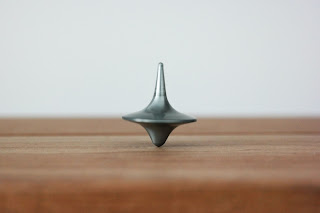Personal finance assessment: how does it work and what is it for?
There is no doubt that everyone decides how to manage their personal finances, but the reality is that we are not always able to adhere to a strict and effective methodology. In this context, we analyse the personal balance sheet, a useful tool that can take into account certain corporate financing concepts to the family economy.
What is a personal balance?
Personal balance sheets are reports that assess the financial situation of a national economy. All domestic economies consist of a range of income and expenditure. In a personal balance sheet the aim is to bring them together and put them in order.
These balance sheets include the three main financial elements and are described in detail: assets, liabilities and equity. Let's go into detail about each of them.
The Assets
These are the Assets you own: real estate, bank accounts, deposits, bills of exchange, Bonds, shares, shareholdings ... If you want more precision in your personal balance sheet, you can learn a little about Corporate balance sheets, these provide information on where assets are located, divided into in fixed assets and current assets.
Fixed assets (current) is the most difficult to convert into money:
§ Real estate (houses, apartments, commercial premises or land)
§ Vehicles (usually motorized)
§ Household appliances
§ Furniture
§ Jewellery
§ Artworks
§ Musical instruments (of certain value)
§ Fixed Deposits
§ Participation fees in investment funds
§ Pension plans
Current assets (non-current) are those that are about to be converted into money or whose conversion into money has already taken place. Money is relatively simple:
§ Bank accounts
§ Cash
§ Personal debts of which you are
Liabilities
It is the debt, that you have taken out and that you are still paying off: a mortgage loan, a credit card, an installment purchase, car bills, rent payments, Consumer receipts ...
It is also possible to distinguish between fixed Liabilities (current) and current liabilities (in the long term). In the case of fixed liability, this means that it is your long-term debt, such as the mortgage, the loan for your vehicle or a relatively large personal loan. Under short-term liabilities are debts that you will soon incur such as a microloan, the rental income for a home or the recurring payments for your subscriptions.
The Legacy
It's the difference between your assets and liabilities, or, in other words, the deduction of your assets minus your debts (the final Income and expenditure accounting).
Let's compare it again with corporate balance sheets: the value of your Wealth provides information about the ability to finance oneself, i.e. make a living based on your income and expenses.
How to analyse a personal Balance?
Once you have all the data on your assets and liabilities, and recorded in a tool that allows you to perform calculations in an Excel spreadsheet, for example, the time has come to create your personal balance sheet.
Legacy: always positive, never negative
Of course, the first aspect you will analyse will be the result of assets: if it is negative, you have reason to worry, because the means that you do not have the financial means to provide for your livelihood (since you owe more than what you have). This situation can arise because your income is not sufficient or because your debts are very high.
The balance between current assets and liabilities
As we said earlier, short-term assets are goods that can be converted into money with relative ease, and in the case of short-term liabilities are debts that you incur have to settle in the short term: you can easily imagine that between there is a necessary link between the two elements of your assets, as you should have sufficient current assets to cover the short-term debts contained in liabilities.
The "bad debts"
Not all debts have the same consequences for our wallets: in fact, you will find that you can get rid of the debts incurred by buying cannot be compared with those of consumer loans. The best strategy is to pay off debt with a very high interest rate as quickly as possible.
The Importance of Fixed Assets
Although they are not easily converted to cash, current assets may be as an effective safety cushion in hypothetical situations of lack of liquidity or excessive debt in the future.
Comparison with previous balance sheets
If you have a balance sheet history do not hesitate to compare them in order to understand the development of your personal finances: how your wealth has changed, which debts you have incurred, which you have liquidated, which Assets you've brought in...
The preparation of personal balance sheets can help us enormously in the planning of our economy and give us a global vision that enables us to make better decisions to achieve our financial goals.



